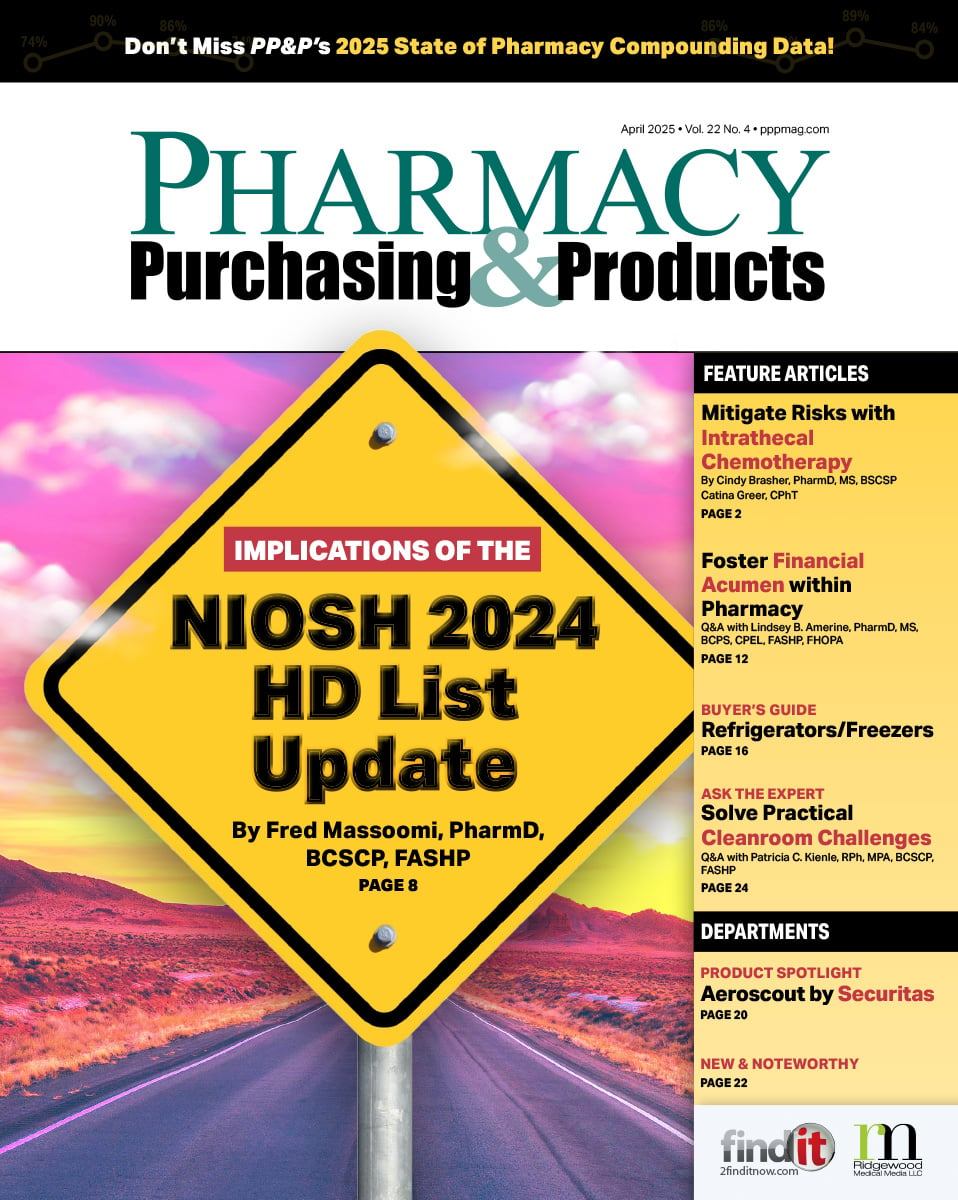- Show Menu
- Contact Us
- FAQs
- Reader Service
- Survey Data
- Survey Winners
- Testimonials
- Upcoming Events
- Webinars
- White Papers
Product Spotlight: Equashield CSTD from Equashield, LLC
Clinical evidence clearly shows that compounding and administering hazardous drugs (HDs), including chemotherapy and antineoplastic drugs, poses a safety risk to staff who come into contact with these agents. NIOSH, ASHP, and ONS all have outlined levels of protection required to ensure health care staff are protected from exposure. Closed system drug-transfer devices (CSTDs) fit into a hospital’s safe handling practice by providing a closed barrier between the hospital staff and the HD. In fact, USP <800> Hazardous Drugs—Handling in Healthcare Settings, which will become enforceable on July 1, 2018, requires CSTD use for nurses administering HDs and recommends CSTD use for pharmacy staff members compounding these medications.

The University of New Mexico Hospital (UNMH) in Albuquerque, New Mexico, is a 629-bed academic medical center with a level 1 trauma center, and houses the state’s only NCI-accredited cancer center. The health system also includes a specialty hospital, a children’s hospital, a children’s psychiatric center, an adult psychiatric center, and several clinics.
CSTDs have long been an integral component of the health system’s safe HD handling protocol. UNMH has been using a CSTD in both the inpatient and outpatient settings for preparing and administering HDs since 2010. In July 2015, we switched CSTDs and began using Equashield.
Protecting Staff
The main purpose for using a CSTD is to reduce staff exposure to HDs. While the best way to accomplish this goal would be to eliminate the use of HDs entirely, clearly this is not possible as patients rely on these drugs as the standard of care. Therefore, the most responsible approach is to contain the hazard and reduce exposure to as low as reasonably achievable.
The strategy for minimizing staff exposure to HDs is based on NIOSH, ASHP, and USP <800> recommendations on engineering controls, PPE, and CSTD use. When evaluating the available CSTDs, our primary requirement was to identify a device that met the governmental agency definition of a closed system.1 Furthermore, UNMH sought to implement a CSTD that met the following additional criteria:
- A non-filter based, mechanically closed system
- Availability of peer-reviewed data demonstrating safety and efficacy (ie, studies on leakage protection and prevention of aerosol escape)
- Easy-to-use system with intuitive connection components that are nurse-friendly
- Does not disturb workflow
The CSTD we used previously addressed most of these criteria, but fell short on ease of use and workflow disruption. Thus, when switching CSTDs, UNMH used a four-step request for purchase (RFP) process to evaluate the available devices.
CSTD Evaluation Process
To ensure a fair and equitable RFP process, we relied on a multidisciplinary approach, requiring participation from both pharmacy and nursing, in evaluating CSTDs. Multiple areas of the health system, including UNMH pharmacies, a second hospital in the health system, and the UNM Cancer Center, trialed the devices. An internet survey platform was used to gather input from users. The CSTD evaluation process encompassed:
- Performance in a CSTD leakage test
- Evaluation of the RFP responses, weighted by critical sections (as determined prior to the RFP submission process)
- Results of pilot product trials. A total of five vendors responded to the RFP, and we piloted two of the five vendors. Only one vendor was permitted at a time on campus, to minimize disruption and to ensure a fair and equitable evaluation
- Presentation by the company representative and an interview with the purchasing department, at the discretion of UNMH
The Equashield clinical team was available and attentive to our needs during the 2-week trial period, providing extensive support and training. After completing step 3, the evaluation team signed a multiyear contract with Equashield without proceeding to step 4, as it was clear that the device fit both our criteria and our budget. Users felt that its components simplified the process during compounding, administration, and disposal.
Staff Satisfaction
Nursing and pharmacy staff is satisfied with the CSTD, which they find intuitive and efficient. Pharmacy personnel embrace the ease of use of the device’s sterilized, air-filled syringe barrel, and nursing finds the slide-to-lock connections intuitive and easy to use. Most importantly, pharmacy and nursing staff have peace of mind that HDs are being prepared and administered safely.
Reference
- Nygren O. NIOSH definition of closed-system drug-transfer devices. Ann Occup Hyg. 2009;53(5):549.

Christopher Gallegos, MBA, CPhT, (center) is a pharmacy project manager for UNMH in Albuquerque. He is a 2016 Doctoral Candidate in Health Care Administration, has a BS in business management, and an MS in business administration. William Long, PharmD, (left) is the director of pharmacy operations for UNMH. He has an MS in business administration. Christina Kim, PharmD, (right) is a clinical pharmacy manager for surgical services and sterile compounding for UNMH.
Like what you've read? Please log in or create a free account to enjoy more of what www.pppmag.com has to offer.








